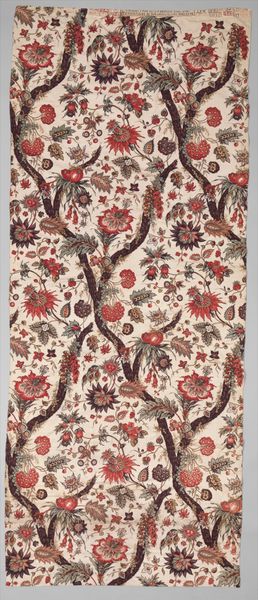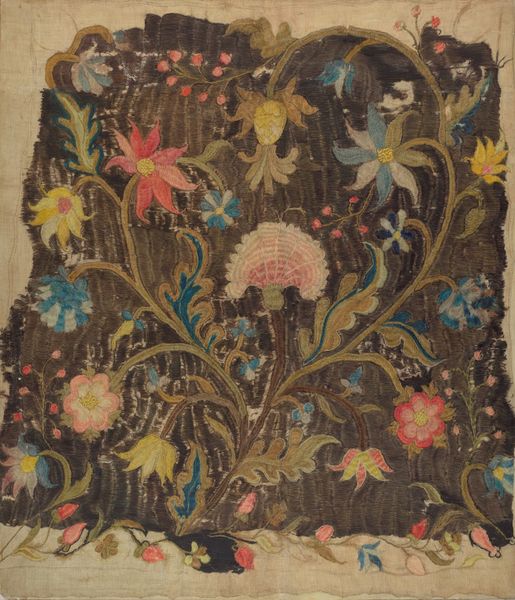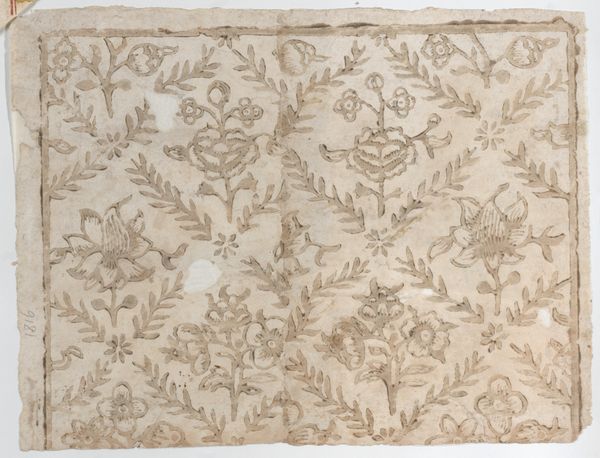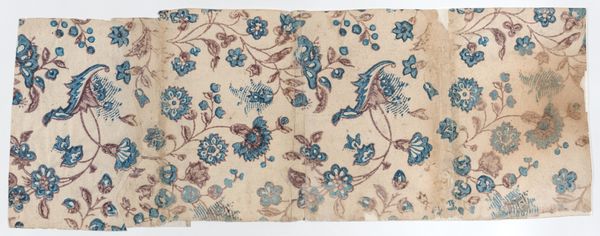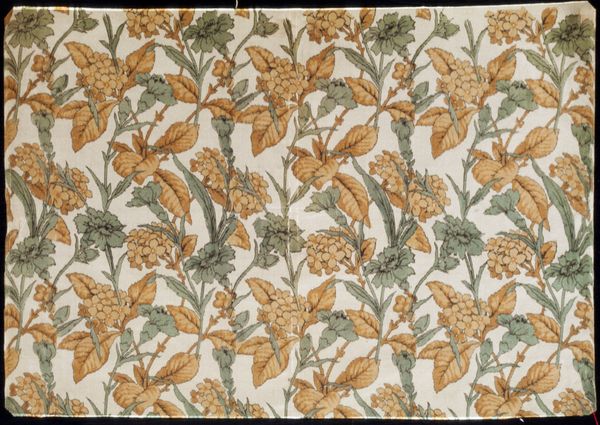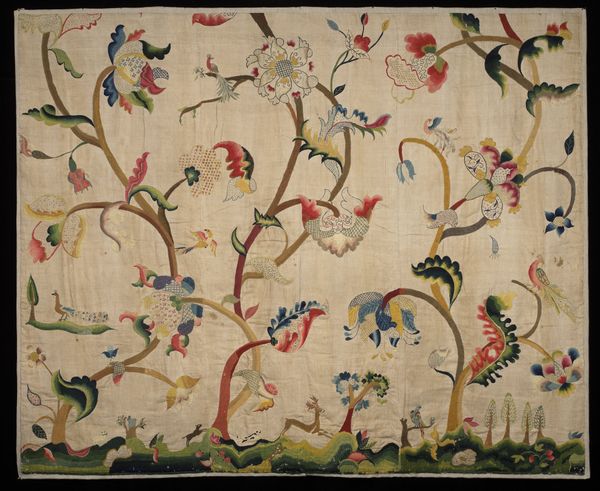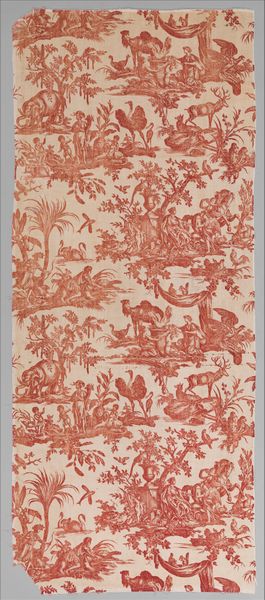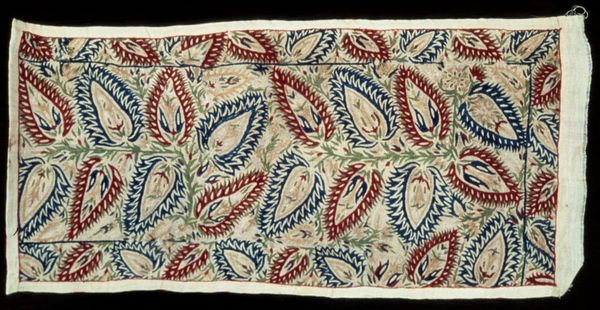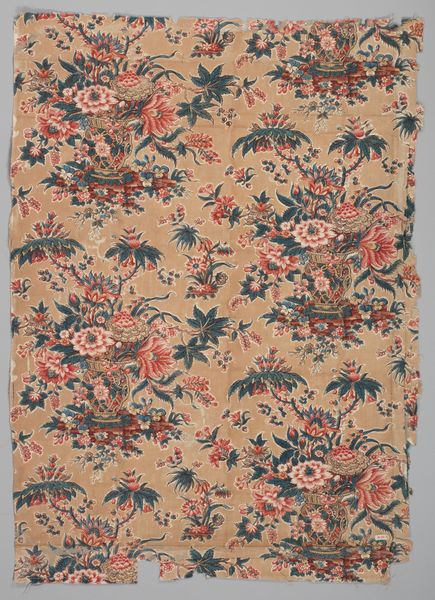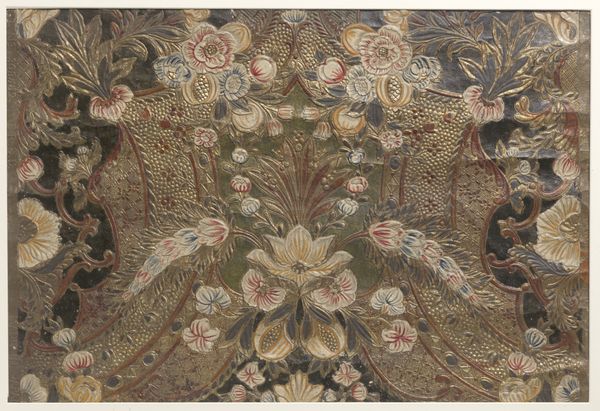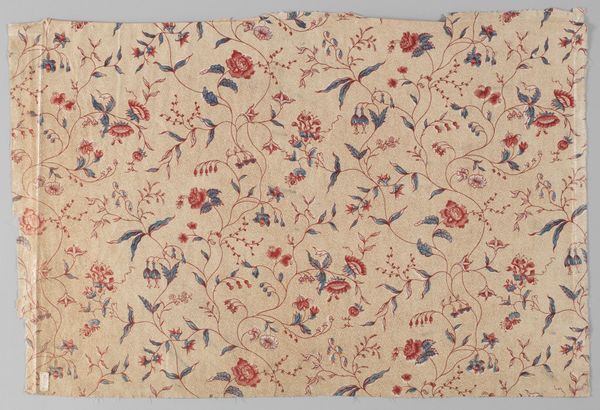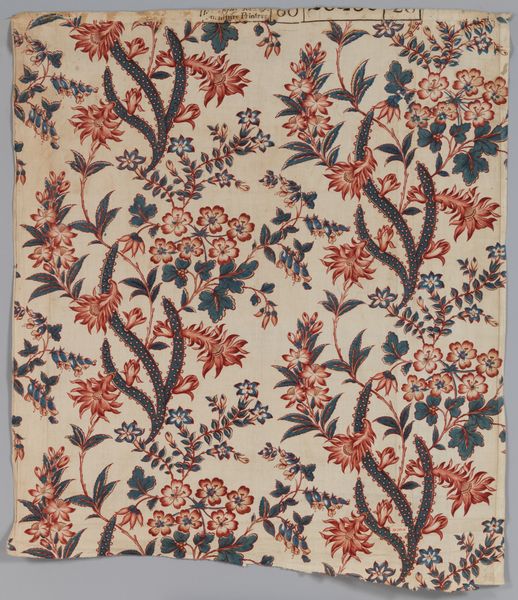
fibre-art, weaving, textile
#
natural stone pattern
#
fibre-art
#
naturalistic pattern
#
baroque
#
weaving
#
textile
#
hand-embroidered
#
pattern background
#
ethnic pattern
#
repetition of pattern
#
regular pattern
#
pattern repetition
#
imprinted textile
#
layered pattern
Dimensions: height 42.0 cm, width 49.0 cm
Copyright: Rijks Museum: Open Domain
Curator: This is a cushion cover, made circa 1600 to 1610, its crafted with woven textile using fibre-art techniques. It shows a pattern with flowers and birds. Editor: It has an interesting densely packed feel, an almost claustrophobic charm with that dark backdrop. What can you tell me about this object’s making? Curator: As textile art of the period, these elaborate designs are meticulously rendered. Woven by ateliers like the Sheldon workshops, which catered to elite tastes and demonstrates the rising economic status and artistic patronage of the English upper classes at that time. Editor: And given it’s meant for a cushion, its functionality brings questions around production and labor. Were these commonly made in workshops? Who benefits? Curator: Indeed, textile production has deep socio-political significance during this period. Workshops, in some ways, could be seen as factories where skilled laborers reproduced standard designs, with only limited creative license or any means to sell outside. And this design draws from Baroque elements of naturalism in tapestry making popular at the time across Europe. Editor: Right, I'm noticing those regular, layered patterns. With flowers, birds, that’s got an idyllic feel… were there popular imagery or source inspirations that they replicated? Curator: Embroidered textiles served as a popular status symbol. The imagery, incorporating flora and fauna, often reflected interests in gardens and natural history that prevailed across many aristocratic estates. The public display communicated affluence, erudition and sophistication. Editor: And beyond display, it offered a softness—quite literally in a cushion form! Was the use or role beyond pure decoration and displays? Curator: Certainly. Cushions softened harder surfaces, contributing comfort alongside beauty, even projecting a cultivated sensibility that blended aesthetic delight and relaxation... It was probably meant to reinforce power dynamics through the means of decoration. Editor: To think that something this seemingly delicate conceals so many layers! Thank you for highlighting those crucial contexts that give the piece new meaning! Curator: Always my pleasure, enriching insights beyond initial perception remains my professional passion.
Comments
No comments
Be the first to comment and join the conversation on the ultimate creative platform.

